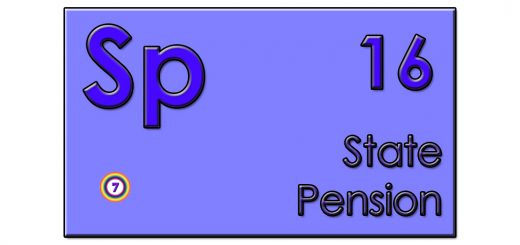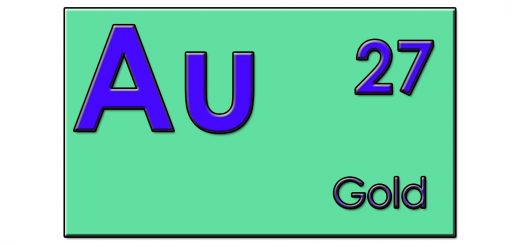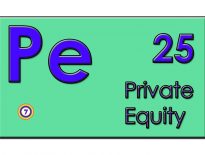Buy To Let – Elements 31

This post is part of the Elements series, a Periodic Table of all the Investing Elements that you need to take control of your financial life. You can find the rest of the posts here.
Buy To Let
What is it?
Buy-to-let is buying a property that you don’t intend to live in, and renting it out (letting it).
For the purposes of today, we will include “accidental” landlords who acquired property without the intention to let.
- This includes couples who retain both properties and rent out one of them
- And people who inherited the properties that they rent out.
What kind of element is it?
Buy-to-let is an asset which forms part of the property asset class, a fundamental subdivision of financial assets
Property is a useful diversifier away from equities.
- It usually outpaces inflation over the medium term – it’s loosely tied to earnings rather than inflation – and is not closely correlated with the stock market
Alternatives to buy-to-let for exposure to the property asset class include:
- Your own home (or primary residence)
- Commercial property investment trusts, or REITs
- These mainly invest in large-scale commercial property, though more interesting flavours (student accommodation, doctors’ surgeries, ground rents etc.) have been issued recently – see here)
- Property ETFs which invest in REITs and track indices
- Note that Open-ended funds (OEICs) are not suitable for property investment
- This is because the underlying assets are relatively illiquid and a rush of withdrawals can lead to the fund locking up for weeks or months.
These alternatives typically have tax, yield and liquidity advantages – and are less-time consuming and expensive to own, manage and maintain. (( Maintenance – which includes dealing with your tenants – will be at a minimum boring, but can easily become difficult and even escalate into drawn-out legal disputes ))
- So we will classify Buy To Let as an Inessential Element.
- This means that it’s not necessary for anyone to own a Buy To Let property.
Who needs it?
As with all the inessential elements, the premise is that nobody needs it, in this case for two reasons:
- Because UK property prices are so high, most people will have more than enough exposure to property through their own home.
- It’s also the case that the alternatives have advantages in terms of tax (hence after-tax yield), liquidity and running costs.
It’s difficult to compare running costs directly between physical property and the REITs and ETFs, since in the latter two cases the costs are hidden inside the funds.
- So the best comparison measure is the after-tax yield.
- To this we need to add the prospects for after-tax capital appreciation.
Yield is income divided by capital value.
- Rents are set by what the market will bear, just like capital prices.
- But UK property prices have been rising for 20 years, and rents can’t keep pace.
- Added to this, second properties – including Buy To Let – now attract a Stamp Duty surcharge of 3% on the purchase price.
- You will also need to spend money to upgrade a property to rental standards.
- And a Buy To Let mortgage will be more expensive than a residential mortgage (and will require a higher deposit).
So gross yields are historically low, particularly in London and the South East.
Note however, that even with the higher deposits, gearing (leverage or borrowing) remains easily available on Buy To Let, which is one of the reasons that so many early-stage investors are attracted to it.
- Most investments (other than spread betting) cannot be bought with just a deposit.
It is important to note, however, that although gearing will multiply your capital gains (see below), it will also multiply any losses.
Net yields – after subtracting running costs – are even lower than gross yields.
- And they have been pushed lower still by a recent tax change which is phasing out the allowability of mortgage interest against 40% income tax. (( This can be avoided by setting up a property management company, but that brings its own problems and expenses – you have to pay corporation tax and work out how to get your money out cheaply ))
Since Buy To Let income can’t be sheltered inside an ISA or a SIPP, this change hits most Buy To Let investors eventually.
- REITs and ETFs, on the other hand, can be sheltered inside SIPPs and ISAs.
Next we come to capital gains.
- The corollary of high prices is low future returns.
- With UK property prices at record highs relative to earnings, the prospects of decent returns are low.
The big gains have already been made by those who invested around the year 2000. (( I speak from experience as me and a friend were looking into this quite seriously, before he decided to buy his mother a flat instead ))
In contrast, the variety of REITs on offer means that the most attractively-priced sectors and funds (relative to net asset value) can be purchases, leading to a more favourable expectation of future returns.
The tax advantage also applies here, too:
- Gains on direct Buy To Let holdings are subject to capital gains tax.
- In fact, residential property attracts a higher rate of capital gains tax – 28% for higher rate taxpayers, compared to 20% for other types of gains.
- REITs within SIPPs and ISAs (and your primary residence) are not subject to CGT at all.
So logically, pretty much nobody is optimising their portfolio by including Buy To Let.
Unfortunately, the typical Buy To Let investor doesn’t look at yield, capital gains and tax rules.
- They look at cashflow.
So long as they are cash-flow neutral, and they aren’t forced to sell when in negative equity – the tenant is effectively paying for their mortgage.
- And at the end of the term they own a house on which they only had to put down a deposit.
However, the recent rise in prices and tax changes have made it much less likely that these two conditions will pertain.
What comes before it?
A plan, a budget, and some financial statements.
- You’ll also need to pay off your debts and build up an emergency cash fund.
Then you can buy a property to live in, and start your investment portfolio with stocks, bonds and perhaps P2P, mostly within SIPP and ISA wrappers.
- You’ll need to be contributing to your workplace pension and have paid down your mortgage before you look at Buy To Let.
What comes after it?
Only the most esoteric stuff, some of which is also Inessential:
- Hedge Funds, Gold, Commodities, FX trading, Spread Bets, SWAG, Options and Warrants.
What age do you need it from?
It’s an Inessential, so strictly, never.
With people buying their first property later and later, by the time this is paid off, you are likely to be in your fifties, unless you have a very well-paid job.
What age do you need it until?
If you do get into this stuff, you should probably treat it as an equities diversifier, and keep it until you decide to switch from your own retirement portfolio into a monthly annuity payment.
- Given current interest rates and longevity projections, this is unlikely to be before the age of 75.
- Or alternatively, when you have failing mental faculties.
Or you could treat it as another pension pot, and start to sell off your Buy To Let portfolio as soon as you retire.
How much does it cost?
Each potential buyer has to carry out that calculation for themselves, but there are four ways to look at this question.
The cost of the average property in the UK is currently £216K, or £485K in London.
- Buy To Let properties are usually cheaper than this, because cheaper properties usually have higher rental yields.
- So let’s say £100K to £250K.
A second approach is to look at the transaction costs (estate agent and lawyer fees, loan arrangement fee, stamp duty, plus the extra stamp duty on second homes).
A third way is to look at the running costs, which are far higher than with most financial assets, since they include management fees and physical maintenance.
But probably the most useful way to look at things here is by a comparison with the counterfactual.
- Is it cheaper (more profitable) to directly own Buy To Let property or to own a primary residence and supplement your exposure to property through REITs?
- The answer will usually be “No”.
What’s in it?
There’s nothing in a physical house or flat beyond the bricks and mortar.
- From a Buy To Let perspective, you could add the quality of the tenants. (( Quality here in terms of reliability of payments, as in credit quality ))
- This will usually be a trade-off against the gross yield.
What does a good one look like?
Beauty is in the eye of the beholder, but:
- High-yield
- Steady rental demand for this type of property in this location
- Steady purchase demand for this type of property in this location (liquidity)
- Low maintenance costs
- Potential capital appreciation
Good luck with getting all of those.
There are also some general property rules of thumb:
- Location, location, location
- Freehold beats leasehold
- Buy the worst house on the best street
- Decide on a purchase price to rental yield ratio, and stick to it
What does a bad one look like?
- Low-yield
- Poor rental demand for this type of property in this location
- Poor purchase demand for this type of property in this location (liquidity)
- High maintenance costs
- Little potential for capital appreciation
Any recommended brands?
The normal rule that in the UK, Georgian and Victorian homes are the most popular, doesn’t apply to Buy To Let.
- What works best will vary by area (from commuter pied a terres to student accommodation).
What are the main risks?
Regulatory risk is a clear issue with Buy To Let.
- For years, successive UK governments tolerated Buy To Let, but recently they have turned against it.
- Popular opinion holds that Buy To Let purchasers are driving property prices beyond the reach of first-time buyers.
There’s an element of truth in that, but the picture is more complicated.
- Many factors are responsible for the rise in property prices, not just Buy To Let.
- The government has an interest in stimulating a healthy private sector.
But it looks as though they would rather this was owned by institutions (mainly pension funds and insurance companies).
Apart from things like fire and flood, buying a rental property has three main risks:
- Interest rate rises will rise, making the cost of servicing your loan more difficult
- Property values may fall, pushing you into negative equity
- You might find tenants hard to come by
How do you deal with these risks?
You should insure against fire, flood and subsidence (your mortgage lender will usually insist on this).
- You may also be able to insure your rents against default, but this will probably be expensive, and will on average cost you money.
You can’t do anything about the regulatory risk.
Until next time.

















“Buy To Let properties are usually cheaper than this, because cheaper properties usually have lower rental yields.”
Do you mean “higher rental yields”??
Yes I do – thanks for that.